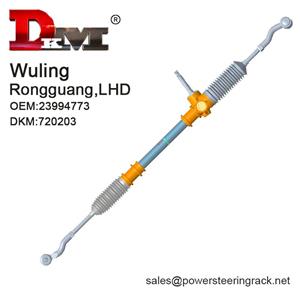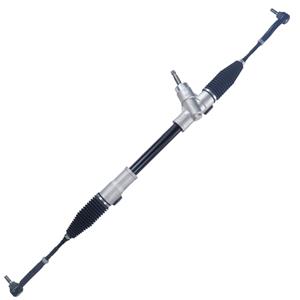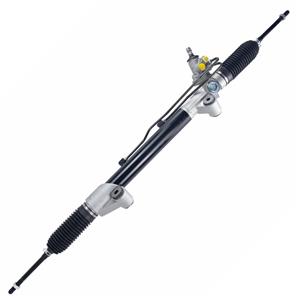Do I need to replace the steering pump after replacing the hydraulic power steering rack?
In the hydraulic power steering system of a car, the hydraulic power steering rack and the power steering pump are closely coordinated and interdependent important components. The hydraulic power steering rack is responsible for converting the rotation of the steering wheel into the steering of the wheels, while the power steering pump provides the necessary hydraulic assistance to the rack to reduce the force that the driver needs to apply when operating the steering wheel. Because these two components work closely together, their working conditions and performance have a direct impact on the steering system of the car.
When the hydraulic power steering rack fails and needs to be replaced, drivers and car maintenance personnel often face a question: Is it necessary to replace the power steering pump at the same time? This question is not only related to the cost of maintenance, but also directly affects the long-term reliability and safety of the car's steering system.
This article will discuss in detail the possibility of whether the power steering pump needs to be replaced after replacing the hydraulic power steering rack, and analyze the relationship between the two, the influencing factors and the maintenance judgment criteria.
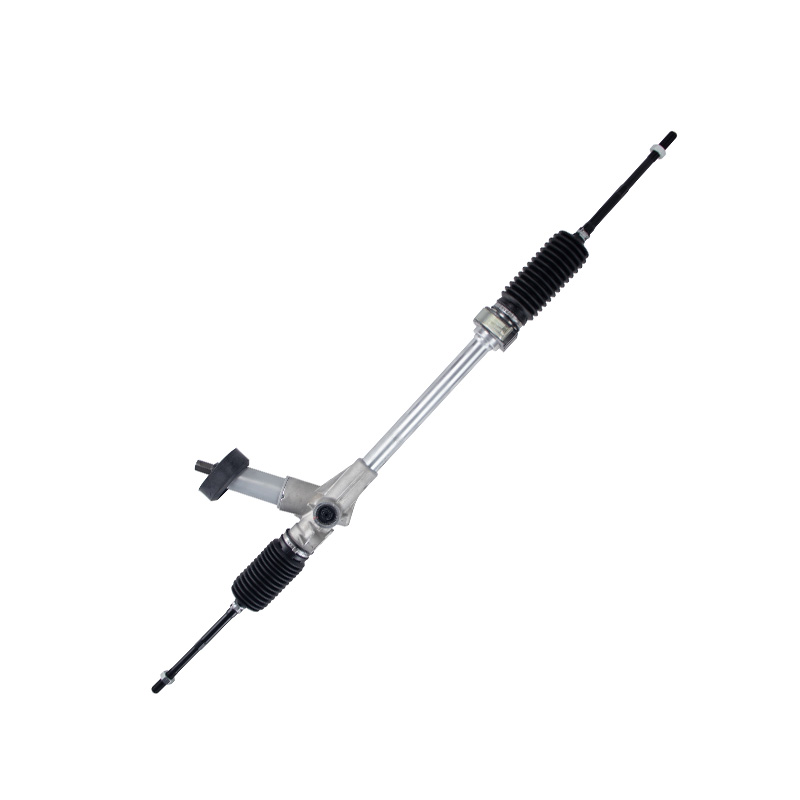
What is the structure and principle of the hydraulic power steering system?
The hydraulic power steering system (Hydraulic Power Steering, HPS) is a steering assist system commonly used in many cars, especially heavier vehicles. It works together through components such as power steering pump, hydraulic oil, steering rack, etc. to provide drivers with a more relaxed steering experience. The hydraulic power steering system is mainly composed of the following core components:
·Power steering pump: The power steering pump is the heart of the hydraulic power steering system, responsible for converting the power of the engine into hydraulic energy, and transmitting the power to the steering rack through hydraulic oil. The power steering pump is usually connected to the engine through a belt, providing different hydraulic pressures as the engine speed changes.
·Hydraulic oil: Hydraulic oil is the working medium in the hydraulic system, responsible for transmitting power and lubricating various components in the system.
·Hydraulic pipeline: Hydraulic oil is transported through pipelines between the pump and the rack.
·Hydraulic power steering rack: The hydraulic power steering rack consists of a rack and a gear. It converts the hydraulic energy provided by the power steering pump into steering force, thereby driving the vehicle wheels to achieve steering.
·Return pipe: The hydraulic oil returns to the power steering pump through the return pipe to complete the hydraulic cycle.
The working principle of the hydraulic power steering system is simply this: when the driver turns the steering wheel, the hydraulic pump in the steering system converts the engine's rotational power into hydraulic energy through a belt, and the hydraulic oil enters the steering rack through a pipeline, pushing the rack to generate the necessary power, and finally achieving wheel steering. The steering rack meshes with the gear according to the pressure of the hydraulic oil, thereby reducing the force required for the driver to steer.
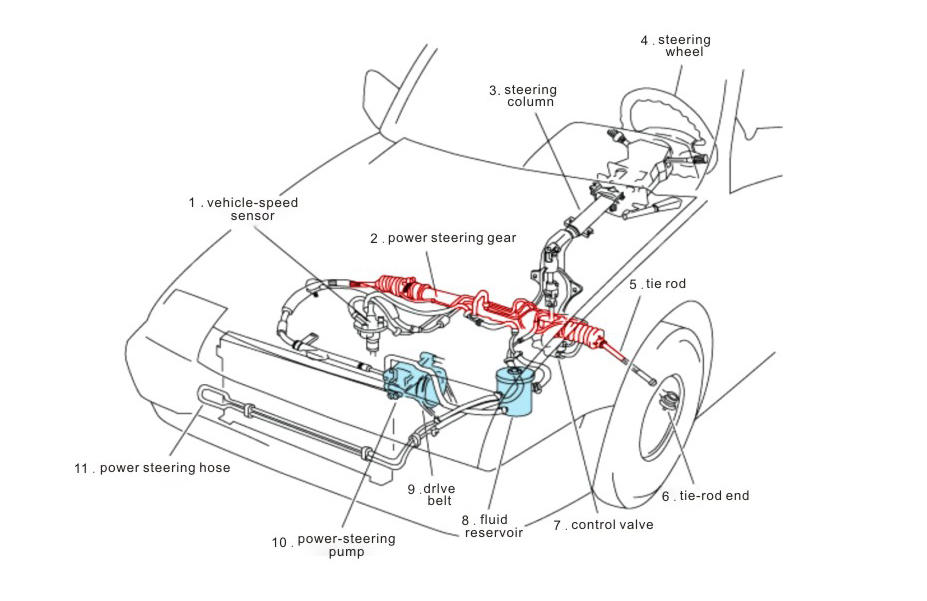
Questions after replacing the hydraulic power steering rack
When the hydraulic power steering rack fails or is damaged, one of the common maintenance measures is to replace the steering rack. However, in this process, many car owners or maintenance personnel will also have another question: Do you need to replace the power steering pump after replacing the hydraulic power steering rack? In other words, is it possible that the hydraulic power steering pump will also be affected when the rack is damaged, resulting in the need for replacement?
To answer this question, you first need to understand the working relationship between the hydraulic power steering rack and the power steering pump and its potential impact.
What is the relationship between the hydraulic power steering rack and the power steering pump?
The hydraulic power steering rack and the power steering pump play different but closely related roles in the hydraulic power steering system. The hydraulic power steering rack generates steering assistance through the pressure of hydraulic oil, while the power steering pump provides power for the hydraulic system. Although their working principles and functions are independent of each other, their cooperation is very important in actual use.
·The role of the hydraulic power steering pump: The power steering pump is responsible for providing hydraulic pressure according to the driver's operating needs. The output pressure and flow of the pump directly affect the performance of the hydraulic system. If the performance of the pump is unstable or fails, it may cause insufficient hydraulic oil pressure, making the steering heavy, or cause problems such as hydraulic oil leakage, affecting the operation of the entire system.
·The role of the hydraulic power steering rack: The steering rack is responsible for converting the pressure of the hydraulic oil into mechanical energy to drive the vehicle to steer. The rack provides a certain amount of steering assistance through interaction with the hydraulic oil. The interior of the rack is usually designed with multiple sealing rings and valve structures to ensure that the hydraulic oil can flow smoothly and prevent leakage.
Although the rack and pump have different functions, they are interdependent and together constitute the core of the hydraulic power steering system. Failure of the hydraulic power steering rack may affect the flow of hydraulic oil and cause abnormal pressure output of the pump. Conversely, a power steering pump failure may also affect the quality and pressure of the hydraulic oil, thereby affecting the normal operation of the steering rack.
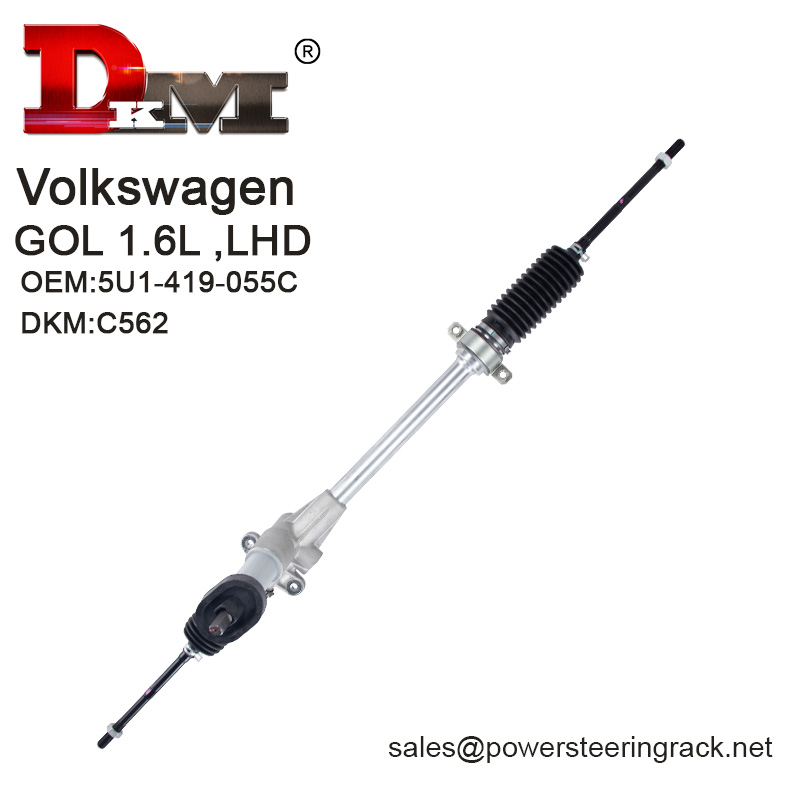
Is it necessary to replace the power steering pump after the rack is damaged?
When the rack in the hydraulic power steering system is damaged, whether the power steering pump needs to be replaced at the same time depends on several factors. Here are some scenarios and reasons why the pump may need to be replaced:
1. Hydraulic oil leakage or contamination
When the hydraulic power steering rack fails, there may be a hydraulic oil leak or a poor seal inside the rack, causing the hydraulic oil to enter abnormal components or be discharged to the outside. This not only wastes hydraulic oil, but may also cause the hydraulic pump to not receive sufficient oil pressure input, resulting in excessive work or damage to the pump.
If the hydraulic oil is found to be contaminated or leaking, it may mean that the pump has also been damaged to a certain extent and needs to be inspected or replaced. Otherwise, continuing to use a bad pump will affect the long-term stability and performance of the steering system.
2. Overburdening the pump
When the hydraulic power steering rack fails, the internal distribution and flow control of the rack may be uneven, causing the pump to provide higher pressure or greater flow to maintain the steering effect. This abnormal workload will increase the burden on the pump and may cause excessive wear of the pump, which in turn may cause pump failure.
If the steering rack is damaged and the pump load increases, the maintenance personnel need to consider replacing the pump to avoid the pump running in an overloaded state, thereby extending the service life of the system.
3. Pump failure propagation
The hydraulic steering system is an interdependent system, and the failure of one component may cause damage to other components. For example, when the power steering pump fails, it may affect the flow of hydraulic oil, causing the hydraulic steering rack to work abnormally, and even damage the internal structure of the rack. Similarly, the failure of the rack may affect the operation of the pump through abnormal oil flow.
In this case, when replacing the steering rack, the maintenance personnel need to check the status of the pump to confirm whether the pump is still in normal working condition. If the pump has shown signs of fatigue or failure, it is recommended to replace the power steering pump at the same time to ensure the normal operation of the entire system.
4. Pump life and rack wear
The power steering pump and steering rack wear synchronously during vehicle use. As the vehicle travels, both the pump and the rack will experience long-term pressure and hydraulic oil, and gradually wear out. Although rack wear may be the direct cause of steering system failure, if the pump has been used for a long time and is close to its service life, it is best to replace the pump together during maintenance to avoid steering performance degradation or recurrence of failure due to aging of the pump after replacing the rack.
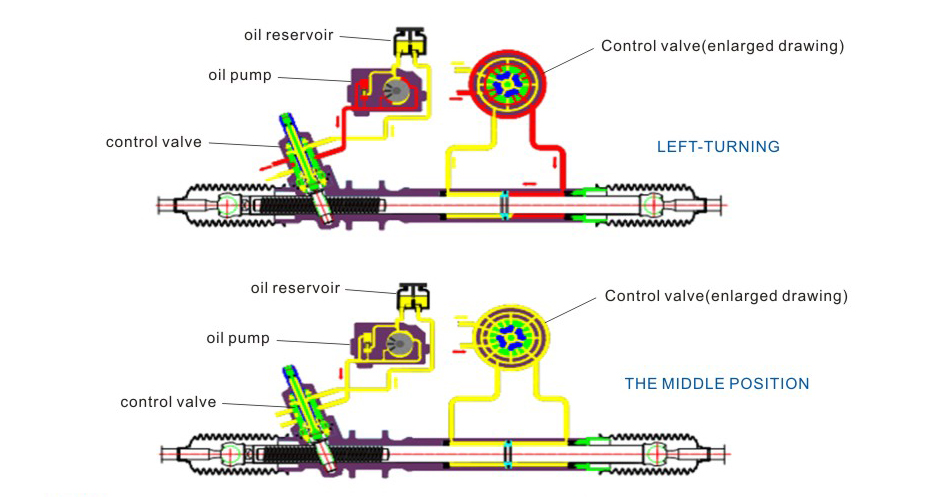
How to determine whether the power steering pump needs to be replaced?
After replacing the hydraulic power steering rack, whether the power steering pump needs to be replaced needs to be determined through a series of inspections and diagnoses. Here are some common inspection methods and steps:
1. Check the quality and pressure of the hydraulic oil
First, check whether the quality of the hydraulic oil is qualified and whether it is contaminated or expired. The quality of the hydraulic oil directly affects the working efficiency of the pump and rack. If there is water, impurities or contaminants in the hydraulic oil, it may cause damage to the pump and rack. It is also necessary to check whether the pressure of the hydraulic oil is within the normal range. Insufficient or unstable pressure output by the pump may be a sign of pump failure.
2. Check the working sound of the pump
By starting the engine, check the working sound of the pump. A healthy power steering pump should run smoothly and without abnormal noise. If you hear abnormal noises or the working sound of the pump is abnormal, it may be that the internal parts of the pump are worn or damaged, and further inspection is required.
3. Check the oil pressure output of the pump
Use a pressure gauge to check whether the oil pressure output of the power steering pump meets the vehicle manufacturer's standards. If the oil pressure output is abnormal, it may be that the pump is damaged or blocked, and you need to consider replacing the pump.
4. Check the working condition of the rack
While damage to the steering rack may be the root cause of the problem, it is also necessary to check the working condition of the steering rack. If the rack is not working smoothly or abnormally, it may be that the hydraulic oil flow is insufficient, causing the pump to fail to provide sufficient pressure.
High-Quality Customized Steering Gears at Low Prices
Guangdong Diamond Auto Parts Co., Ltd. (DKM) has been manufacturing top-tier power steering gears since 1996. We offer customized solutions for automotive manufacturers and dealers looking for affordable, high-quality steering systems. Our products cater to popular brands such as Toyota, Honda, and Mitsubishi, and we pride ourselves on providing cost-effective options. Contact us for bulk pricing, quotes, and the latest promotions on steering gear products.

